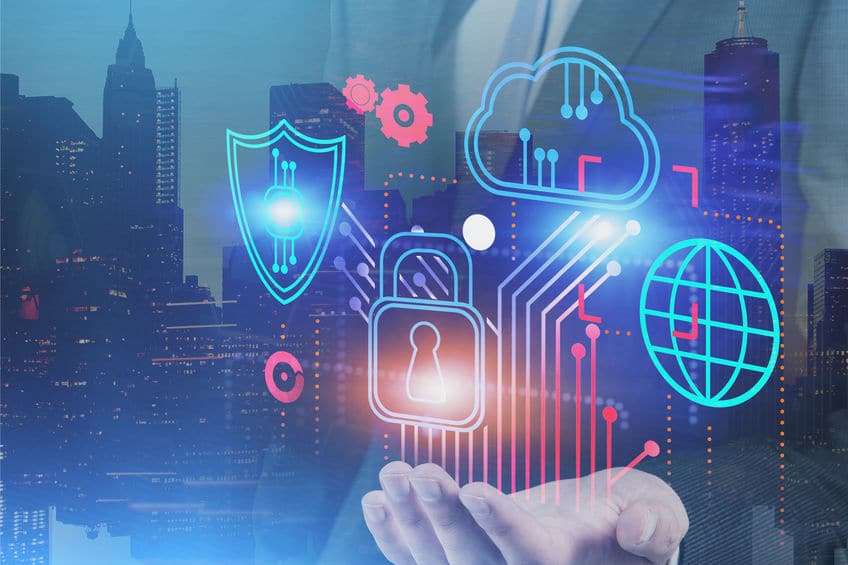Cybersecurity as a Career in New Orleans, LA
What does a cybersecurity career look like?
In this article, we’ll explore topics ranging from types of cyberattacks you may encounter on a given day and basic concepts such as network and application security.
If you’re curious about what to expect from a cybersecurity career, keep reading to learn more.
What Is Cybersecurity?
Cybersecurity involves the general protection of any kind of data presented in electronic form from being attacked or compromised by unauthorized personnel. This includes identifying where critical data is stored and the kind of risk that such information is exposed to. Once the risks have been identified, the necessary technology is used to protect the data from a cyber attack.
Jobs in cybersecurity require an understanding of the firewalls, technology, and various intrusion protection systems needed to protect data. Such knowledge enables them to apply the cybersecurity concept in organizations effectively. It is a general data protection regulation.

What Is Network Security?
Network security refers to the practice of preventing unauthorized access to a corporate network. It involves the continuous monitoring of suspicious activities that might misuse or modify the network and other network-accessible resources without the authorization of the right personnel.
Network security is a broad term since it covers multiple devices, processes, and technologies. It is merely a set of policies that have been put in place to protect the ICA or integrity, confidentiality, and accessibility of computer networks.
Such access can be made using both software and hardware devices, and therefore, the network security protocols have been designed to prevent such intrusion.
What Is Application Security?
Application security refers to the security measures at the application level, including the source end and front end at the software level. This includes systems such as databases, websites, mobile apps, and server applications. The security measures are aimed at protecting the application’s data from being hijacked or stolen. It consists of software, hardware, and various procedures that help identify and reduce security vulnerabilities.
There are plenty of technologies that can be used to ensure application security. Among such technologies are source code analyzers, firewalls, and cloud access security brokers (CASBs).
Application security provides some of the best-paying cybersecurity jobs, with an average salary of $102K in New Orleans.

What Is Information Security?
Information security involves all practices necessary for protecting information assets and systems at the network level. Information can be defined as data that has been transformed into something that has meaning.
Generally, information security focuses on the confidentiality, availability, and integrity of data. The practice involves areas such as servers, routers, workstations, and other wireless networks. Among the technologies used to protect systems at the network level are firewalls, data loss prevention (DLP), and intrusion prevention systems.
Vulnerability scanners, patch management, and secure web gates can also be used to offer advanced protection to operations at the network level.
Information technology security is achieved through risk management and mitigation.
What Is Operational Security?
Operational security is considered to be a risk management process. It requires managers to view the organization’s operations from the perspective of an enemy, hence making it easy for them to identify and protect sensitive information.
Why is Operational Security Important?
If that information ends up in the wrong hands, then the security of the whole organization becomes compromised, and such could negatively affect operations. Operational security determines whether the information obtained by opponents could be used to harm the organization.

Cyber Attacks and the Different Types
A cyber attack, also known as a cyber threat, is a malicious act aimed at damaging, stealing, or disrupting data. It is a threat mounted against our digital devices through cyberspaces.
Cyberspaces are intangible, but what makes the attacks real is that they are aimed at harming people, and their impact can be felt after the attack. In some cases, cyberterror can be extreme to the extent of threatening human lives.
Cyber attacks can include data breaches, computer viruses, and denial of service attacks (DoS).
Different Types of Threats
Phishing
Phishing is a cybersecurity crime where the target is contacted through text messages, email, or telephone. The act is carried out by individuals claiming to be from a legitimate institution. They aim to lure the target into providing them with sensitive data that they would, in turn, use to carry out the attack.
Among the data that the target might be lured into producing are personally identifiable information, passwords, banking, and credit card details. Other examples include a generic greeting where the phishing email is sent to many contacts.
Forged links are another commonly used tactic to carry out phishing. Such links tend to have names that people can easily recognize. However, this does not mean that they are real.

Ransomware
A ransom is a payment made to kidnappers to release the individual who had been kidnapped. The same applies to computers, but in this case, the malicious activity is known as ransomware.
The attackers target an individual’s computer by using malicious software that would display a message demanding you to pay a fee for your computer to work again. The threat is a money-making strategy where malicious software can be installed on your computer through an instant message, website, or email messages.
The malware can also display messages claiming that the person’s private data would be published or its access blocked unless the ransom is paid.
Malware
Malware refers to any type of software intentionally designed to harm a computer, server, or computer network. It consists of a code developed by cyber attackers to damage data or gain unauthorized access to a particular network.
Malware might include worms, viruses, adware, scareware, and rogue software, among others. The malware can be installed on another person’s device without their knowledge, enabling the attacker to gain access to private information or damage the device. The aim of such actions is most often financial gain.
Social Engineering
Social engineering uses deceptive ways to manipulate an individual into providing personal information that could, in turn, be used to create cyberattacks. It involves the art of exploiting an individual psychologically to gain access to a system or data by gaining the person’s trust before getting them to provide personal information.
A major example of physical social engineering is tailgating. The social engineer waits for an individual with access to a building to pass through a secure entry, and they follow behind them undetected.
Unlike the previously mentioned attacks, social engineering is more of a psychological attack rather than a technical attack.

How Education Within Companies Prevents Cybersecurity Issues
Educating employees on the importance of cybersecurity reduces the chances of the organization being exposed to attacks. Some attacks are known to be carried out using one of the employee’s details. For example, a vague message from the CEO is sent to multiple employees asking them to respond or click a link. Without the proper education, employees may not see this message as a threat and fall victim to the attack unintentionally.
As a result, education on cybersecurity best practices will prevent specific threats from occurring and help the employees understand the adverse effects that the risk might create.
Cybersecurity Best Practices
According to the National Institute of Standards and Technology or NIST, small businesses tend to think that they are invisible to cyber attacks since they have nothing of value to hackers. However, the truth is that every entity or person is exposed to the risk of being hacked.
Regardless of how large your business is, it’s highly recommended to implement some of the cybersecurity practices listed below to help avoid cyber attacks:
- Protecting your data by not sharing personal information.
- Using strong passwords.
- Enabling firewall protection both at work and at home.
- Avoiding connection to unsecured Wi-Fi.
- Installing security software with cybersecurity certifications.
- Avoiding opening pop-up emails or suspicious links.
- Implementing third-party controls.
- Talking to the IT department to ensure all security programs are working properly.
- ICA or integrity, confidentiality, and availability.
- Focusing on training and educating employees about cybersecurity.
Elements of Cybersecurity
We already mentioned network security and application security, but cybersecurity is a broad field with a variety of individual focuses making up the bigger picture.
Endpoint Security
This is an element of cybersecurity that involves the protection of user devices, such as laptops, mobile phones, and desktops. The protection is aimed to ensure that attackers do not exploit such devices.
Endpoint security allows the protection of devices in the cloud or on a network from various cybersecurity threats because once devices are connected to a network, they create a path through which attackers can launch their malicious activities. Through endpoint security, an attack on connected devices is less likely.
Data Security
Data security is a cybersecurity element that refers to the protection of digital data from being accessed by unauthorized personnel, this includes data found in databases.
Data security involves all the processes that ensure such data does not get corrupted throughout its life cycle. Failure to protect data can lead to advanced security breaches in the organization, such as data encryption, tokenization, and hashing.
Combining other data protection management practices across the various platforms and applications counts as a way of implementing data security.
Identity Management
Identity management is a process used by organizations to offer workers access to the system or network. The process involves the identification, authentication, and authorization of individuals to access corporate systems or networks.
This prevents unauthorized personnel from accessing system data and networks.
Database and Infrastructure Security
Database security refers to the tools, measures, and controls designed to preserve database integrity, confidentiality, and availability. It addresses the data, the data management system, and any associated applications. It also covers all the infrastructure used in the protection of data.
The infrastructure used in achieving such protection is intended to identify and cover any vulnerabilities within the system.
Database security is considered a complex endeavor since it includes all the forms of information security and the technological practices implemented to secure data.
The most accessible and frequently used databases stand a higher chance of being exposed to threats. Therefore, the cybersecurity management team’s role is to ensure that they identify the most vulnerable databases and proactively protect them.

Cloud Security
Cloud security is the protection of data that has been stored online using various cloud computing platforms. It involves protecting such data from deletion, theft, or leakage.
Among the methods used to provide cloud security are:
- penetration testing
- firewalls
- tokenization
- obfuscation
- avoiding public network connections
- using virtual private networks
Businesses can configure cloud security to their desired level by filtering traffic. The cloud can be as secure as the traditional servers. All that is required is the right configuration and implementation of data protection technologies.
Mobile Security
Mobile security refers to the ways through which the device can authenticate its users and protect data. It also involves the restriction of unauthorized access to the mobile device’s data.
Mobile security is achieved through the use of personal identification numbers, passwords, or pattern screen locks. Some smartphones have additional security features such as fingerprints and face recognition.
All these features have been designed to ensure that a third party cannot access the mobile device information without the owner’s authorization. Other forms of mobile security protection are built into networks such as encrypting data across cellular networks.
Disaster Recovery and Business Continuity Planning
While the previous elements focus on preventing an attack, disaster recovery refers to the practice of recovering from an attack. Most organizations have set policies and procedures that ought to be followed in the event of a disaster. However, some cyber attacks may adversely impact the organization, making it difficult to recover from the attack.
Therefore, business continuity planning is the strategy that a business intends to implement after an attack to ensure that it continues its operations.
Among the disaster recovery strategies are the recovery of lost data. Recovery is one of the most challenging practices of organizations, especially in a case where the attack caused irreversible damage and forced the organization to revamp its security and communications for the business to continue operations.
End-User Education
End-user education is the training provided to users to reduce human error. Although this might seem like an easy task, it turns out to be impossible to eliminate human error possibilities in most cases. End-user education offers application users the opportunity to become responsible for the security of their data.
Organizations must ensure that all users get enough education regarding cybersecurity basics. As a result, the organization can reduce the vulnerabilities associated with end-user security.

Data Loss Prevention
Data loss prevention refers to all the strategies that can be implemented by an organization to prevent the loss of data from its databases in the event of an attack.
The cybersecurity framework requires individuals and organizations to implement risk mitigation practices to minimize or prevent data loss. Once data has been lost, there are fewer chances of recovering it again.
Intrusion Detection Systems
Intrusion detection systems are applications or software designed to monitor a system or network for possible malicious activities. It is also made to detect policy violations that might create a vulnerability to a cyber attack.
The intrusion activities are mostly reported to the administrator. In other cases, such intrusions are collected centrally using an event management system.
The two types of intrusion detection systems are host-based and network-based systems.
- The network-based systems play a role in monitoring the network connections and identifying any suspicious traffic.
- The host-based systems monitor systems for any malicious activities. The systems work by detecting any variation from ordinary activities.
Risks of Having Poor Cybersecurity
Given the current technological advancements, the types of cyber attacks have increased a lot. Luckilly, there are plenty of technological security protocols in the market that individuals can utilize to secure their businesses or online activities.
If an organization wishes to have the best cybersecurity, then it needs to employ the right personnel. A cybersecurity employee’s salary is incomparable to the adverse effects that cybercrime might cause to the organization.
Here are some of the risks that people are exposed to when they have poor cybersecurity.
Compromised inventory management. If an organization has not implemented good cybersecurity, then it risks having its assets compromised by attackers. Inventory management might involve plenty of applications and networks which are vulnerable to cyber attacks. Therefore, it is necessary to ensure that the networks and applications used to manage inventory are secured against attacks to avoid losses.
Cyber attacks could lead to business closures. In the case of inadequate cybersecurity measures, a business risks facing advanced attacks, which might lead to irreversible data loss. Such situations leave the company with the option of starting anew, a task that might be challenging.
As a result, many smaller businesses that get adversely affected by cyber attacks choose to close operations. Having the right technology to prevent cyber attacks is an excellent strategy for ensuring that businesses do not close down after a crime since they can quickly recover.
Compromised security leads to long-term effects. Having poor cybersecurity exposes an individual or organization to cybersecurity risk. The occurrence of cybercrime has the potential to create long-term effects, such as a damaged reputation.
For instance, organizations that face significant attacks receive a lot of press attention, which could, in turn, affect their client’s trust in them. Poor cybersecurity practices also risk a reduction in business growth since potential investors would avoid investing in a business that has been a victim of cyber attacks in the past. It takes a lot of effort for such companies to convince investors that the business is secure.
Different Types of Attacks
Hacking
Hacking refers to an attack that attempts to exploit a private network or a computer system. It is the unauthorized access to a computer system with the aim of malicious gains.
The hacker uses their technical skills to gain access and control of a computer system and its network. Once they have achieved such control, they implement the malicious activity to trigger the hacking event. Anyone can be hacked if they have not installed the proper protections.

Cross-Site Scripting
Cross-site scripting is a type of cyber attack where an injection containing malicious scripts is forced into the code of a trusted website.
The attackers use a web application to send malicious codes. They are mostly sent as a browser-side script to another end user. The types of cross-site scripting include discovery and prevention, DOM-based, reflected, and stored XSS.
All these types cause varying degrees of damage, with stored cross-site scripting being the most persistent. It is considered one of the most dangerous kinds of cyber attacks since users can accidentally or unknowingly trigger the payload.
DNS Spoofing
Domain Name Server (DNS) spoofing is a type of cyber attack that uses manipulated DNS records to redirect users’ online traffic to another fraudulent site.
Such sites usually resemble the intended website and make it difficult for the user to realize they’ve been hacked. DNS spoofing focuses on exploiting the system’s vulnerabilities in the domain name to direct traffic to fake servers. It is a dangerous type of attack since the intended user is often in the dark about the switch.
Secure Sockets Layer
A secure socket layer (SSL) involves establishing an encrypted link between the client and the server. In most cases, it occurs between a browser and a web server or a mail client and a mail server.
Such encrypted protocols enable secure communications across the internet. However, cyber attackers use such protocols to conceal attacks since the protocols can secure both legitimate and malicious data.
Cybersecurity Jobs in New Orleans
Now that you know what to expect in your cybersecurity career and the skills that cybersecurity involves, you may be wondering what jobs are available in New Orleans.
Starting a cybersecurity career without experience doesn’t mean you can’t dip your toes in entry-level roles. As you build more experience and hands-on knowledge, you’ll gain more confidence to pursue new, more challenging roles.
Entry-level cybersecurity roles in New Orleans (from Zip Recruiter)
More entry-level cybersecurity jobs in New Orleans (From Jooble.org)
When you’re ready to begin your cybersecurity career, our team of experts will guide you through a 10-month program, providing hands-on training and professional development services to help you put your best foot forward. Fill out the form below or contact us at (504) 475-1400 for your initial consultation.
Read Next
15 Cybersecurity Terms You Should Know

